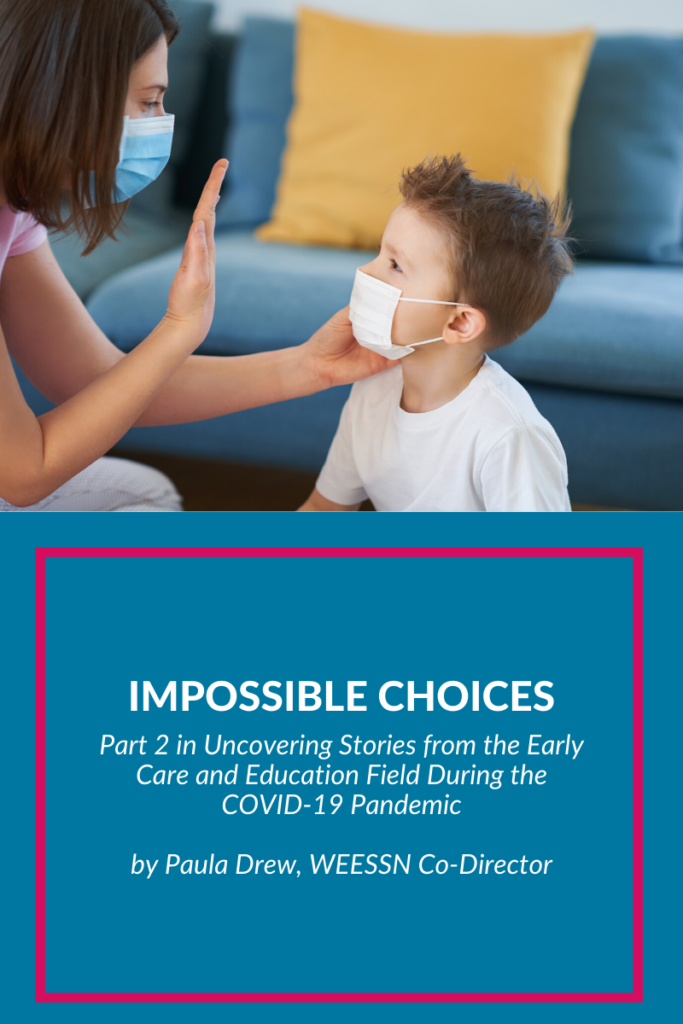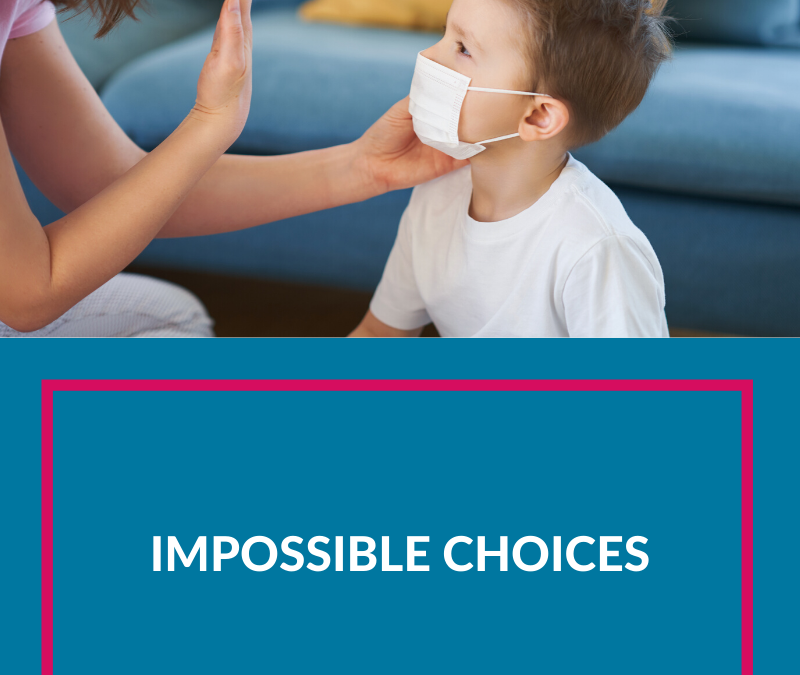By Paula Drew, Co-Director, Wisconsin Early Education Shared Services Network
 This post is the second in the series, Uncovering Stories from the Early Care and Education Field During the COVID-19 Pandemic, based on in-depth interviews of child care providers across Wisconsin.
This post is the second in the series, Uncovering Stories from the Early Care and Education Field During the COVID-19 Pandemic, based on in-depth interviews of child care providers across Wisconsin.
I am the daughter of two small business owners. I remember many late–night conversations around the dinner table where competing priorities were weighed and judged. For many small business owners and administrators, it can be freeing to have control over every detail and other times, it seems you don’t actually have control over any of it. Like other businesses of this size, child care programs typically lack human resource departments, legal expertise, and financial planners to help weigh these decisions. So, when COVID-19 hit Wisconsin, child care programs were tasked with making an impossible decision – close their doors or risk getting sick. To stay open meant greater financial safety; to close meant greater physical safety.
One child care center director I spoke with said, “I had two budgets: the cheaper budget and the safer budget.” The burden to be the one to choose to keep people working or to stop the spread of the virus was unbearable. Early educators often live paycheck to paycheck in this field (averaging $11/hr) and even a small break in income could create housing and food insecurities. Staying healthy is a privilege that not all can afford in this pandemic.
Consider the story of a family child care provider in a rural part of the state. She is a single woman with no other income besides her child care business. The parents she serves are mainly those still leaving the house for work each day and would not be able to pay her unless they had child care to work. Closing her doors was not an option she could entertain. These very real financial concerns eclipsed her own anxieties about staying healthy. While she can afford to keep the lights on, she’s working even longer hours than her typical 10 hour day – sanitizing toys, cycling loads of laundry and obsessively wiping down anything and everything that can’t be laundered or thrown in the dishwasher.
Now consider a center director who manages a non-profit program in collaboration with a parent board of directors. Similarly, they had to heavily weigh finances of the program and the needs of working parents. However, as an employer of 10 staff, this decision was even more complex. The risk of exposure with a larger amount of staff and children was much higher. The program closed temporarily to create practices and policies to ensure improved health and safety protocols; then it reopened. They were lucky enough to be able to utilize some Small Business Administration (SBA) Paycheck Protection Program (PPP) funding to maintain the business during its temporary closure. This funding was a “forgivable loan” (or in other words a grant), as long as the program complied with program rules (75% of the funding is required to support payroll costs and you had to retain all of your employees). While they kept all of their staff, they have far less children attending the program. This helps ensure that they can reduce any mixing of kids or adults (meaning no substitutes or “morning/afternoon” teachers needed). They are also spending much more on supplies and cleaning fees. While these practices allow them to operate safely, they are proving financially unsustainable. To continue this into the fall, tuition costs per child would have to increase $500/month to make up for a projected $180,000 deficit in the next fiscal year. Margins in this field were already tight pre-COVID-19. An average of 85% of revenues covered payroll and everything else payed fixed costs, like rent and insurance. There just isn’t anything extra to make up the difference.
Another provider that I spoke with, who is also a nurse, spoke about the inevitability of illness in her program. She said she didn’t worry if someone in her program would get sick, but rather when it would happen. Indeed, this is already happening in other programs. Young children often have runny noses, share toys, and don’t know how to be physically distant. Additionally, less than half the early childhood workforce receives employer–sponsored health insurance. Naturally, when someone in a child care program contracts COVID-19, the program must partially or fully shutdown for 2 weeks to halt the spread of the deadly virus. While closing is clearly the best practice to keep children, families, and staff safe, because programs are dependent on parent fees for their operating budget, the financial viability of the program is at also risk.
While financial security and physical safety are driving factors for many sectors right now, few are experiencing this tension like the child care industry. The airline industry received $25 Billion in CARES funding relief. Delta Airlines alone got more than the entire child care industry who received a mere $3.5 Billion. Airline travel for individuals and cargo is essential for our economy. However, America relies on child care as well – to support essential personnel and parents who return to work. Yet, our country has never invested in it as the public good that it is. Moreover, the financial viability and the health and safety of these programs at this critical time, have far reaching implications for the successful reopening of the larger economy. Every other sector relies on child care availability for parents to return to work. A provider I talked to today put it this way, “they say we’re essential because they realize just how much they need us, but without the financial assistance to safely operate, we feel utterly expendable.”
While these are by far the biggest take-aways from my research with child care providers in Wisconsin during the pandemic, there are many more layers of complexity that this blog will explore over the summer. I hope you continue to read along and share your own stories about this time as well.

